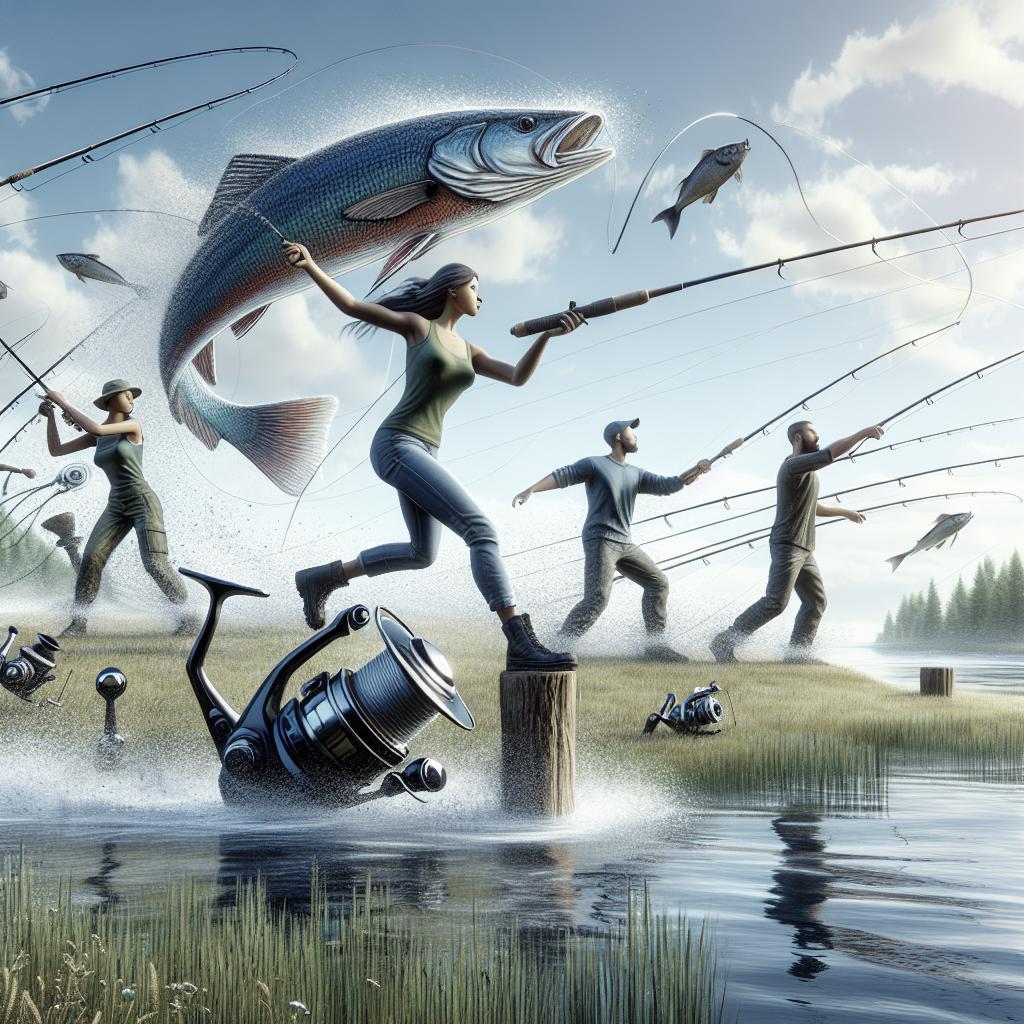“`html
Improving Casting Distance: Tips and Techniques
Casting distance is a crucial aspect of fishing, directly influencing one’s chances of a successful catch. Whether you’re a novice angler or a seasoned fisherman, honing your casting skills can significantly elevate your fishing experience. This blog post delves into various factors impacting casting distance, from mastering technique to gear selection. By understanding how action impacts load, the importance of rod length, the effect of line size and materials, as well as how environmental elements like wind can influence your performance, you’ll be better equipped for more precise and longer casts. Explore these insights to enhance your fishing proficiency.
Action Determines Load
The action of a fishing rod is a critical component that determines how well it can store and release energy, directly impacting casting distance. Fast-action rods, which bend near the tip, provide quick hook sets but may not be ideal for maximum casting distance. On the other hand, slower action rods, which bend closer to the base, allow for a longer load time, effectively acting like a spring to propel the lure further.
To improve casting distance, it’s essential to understand the loading dynamics of your particular rod. By timing your cast to capitalize on the full bend of the rod, you can maximize the rod’s inherent power. Practicing with different rods and getting a feel for their respective actions can help you develop better control and potentially increase your casting range.
Longer Means Longer
The length of the fishing rod plays a significant role in casting distance. Simply put, longer rods enable longer casts. This principle is based on the increased leverage and line travel distance provided by a longer rod, allowing the angler to generate more speed and momentum.
When aiming to enhance your casting distance, consider opting for a rod that suits your physical comfort while also providing the desired reach. While extremely long rods may be cumbersome in certain fishing scenarios, finding a balance between length and usability tailored to your style can be pivotal. Experimenting with different rod lengths can help identify what works best for your specific fishing environment and casting aims.
Line Size Can Be a Drag
Line size is another crucial element that affects casting distance. Generally, thinner lines provide less air resistance and drag during a cast, enabling longer distances. However, it’s important to balance line diameter with strength requirements based on the type of fish you’re targeting.
To optimize casting length without compromising durability, consider using the thinnest line possible while ensuring it can withstand potential catches. Braided lines, which offer high strength at reduced diameters compared to monofilament lines, can serve as a practical option to enhance casting performance while maintaining reliability.
Line Material Changes Distance
The material of your fishing line also influences casting distance. Monofilament, fluorocarbon, and braided lines each have unique characteristics that affect their performance during casting. Monofilament lines are buoyant and stretchable, offering easy handling but potentially less distance. Fluorocarbon, with its denser composition, tends to sink faster but can offer better abrasion resistance.
Braided lines, while generally superior for casting due to their thin and non-stretch nature, may require adjustments in terminal tackle rigs due to their visibility in the water. Selecting the appropriate line material based on the fishing conditions and target species can optimize both distance and success.
Weight Adds Distance
The weight of your lure is integral in determining the distance of your cast. Heavier lures can travel farther because of the additional momentum they gain from the cast. However, excessively heavy lures can alter the dynamics of your rod’s load and affect accuracy.
When aiming to enhance casting range, experiment with various lure weights to find the sweet spot where distance and accuracy are balanced. Fine-tuning lure weight is especially pivotal under different environmental conditions, allowing for strategic game fishing approaches.
Lure Profile Can Hinder Casting
The aerodynamics of the lure profile is a frequently overlooked factor that impacts casting distance. Bulky or irregularly shaped lures can create air resistance, reducing casting performance. In contrast, lures with streamlined shapes tend to cut through the air more efficiently, achieving greater distances.
Be mindful of the lure’s design when aiming for long casts. Opting for aerodynamic lures can reduce air drag and allow for smoother casts. Consider maintaining a variety of lure profiles in your tackle box to adapt to both distance needs and fish behavior.
Wind Is Not Your Friend, Usually
Wind often poses a significant challenge to maximizing casting distance. Casting against the wind can dramatically reduce range, while casting with the wind can provide added distance. Understanding wind patterns and adjusting your casting technique accordingly can help mitigate adverse effects.
When faced with strong headwinds, aim to lower the trajectory of your cast to minimize snagging and maintain distance. Conversely, when casting with the wind, take advantage of the wind’s assistance by elevating your cast for optimal distance. Hanging your lures suitably and choosing appropriate locations can greatly enhance efficiency.
Let Out the Line to Add Distance
Line release technique can significantly impact casting distance. Allowing more line out before executing the cast can enable a longer length of line to travel through the air, resulting in extra distance. Implementing a smooth and consistent release will avoid slack, ensuring a forceful and productive cast.
Practice your timing and control over line release to develop a powerful and effective cast. Observing experienced anglers or attending workshops can also offer invaluable insights and techniques to refine your style, ultimately extending your casting distance.
Jason Sealock
Jason Sealock, an acclaimed fishing expert, has shared numerous insights on the principles and techniques that can improve casting distance. With years of experience and a wealth of knowledge, Sealock emphasizes the importance of understanding fishing equipment dynamics, as well as integrating subtle modifications to enhance performance.
His contributions to the angling community underline the significance of deliberate practice and equipment adjustment, encouraging anglers to experiment and adapt to their environments. For enthusiasts eager to expand their skills, Sealock’s guidance serves as a valuable resource, helping to master the art of long casts.
Lessons Learned
| Factor | Impact on Casting | Recommendation |
|---|---|---|
| Action Determines Load | Rod action affects energy storage and release | Understand rod dynamics, practice different actions |
| Longer Means Longer | Rod length provides more leverage and range | Choose a balanced length for comfort and reach |
| Line Size Can Be a Drag | Thinner lines offer less air resistance | Select the thinnest line that maintains strength |
| Line Material Changes Distance | Different materials offer varied casting properties | Use material suited for conditions and target species |
| Weight Adds Distance | Heavier lures gain more momentum | Balance lure weight for distance and accuracy |
| Lure Profile Can Hinder Casting | Aerodynamic lures reduce air resistance | Choose streamlined lures when long casts are needed |
| Wind Is Not Your Friend, Usually | Wind direction alters casting range | Adjust cast to wind patterns for better results |
| Let Out the Line to Add Distance | Line release affects casting length | Improve control and timing in line release |
“`


